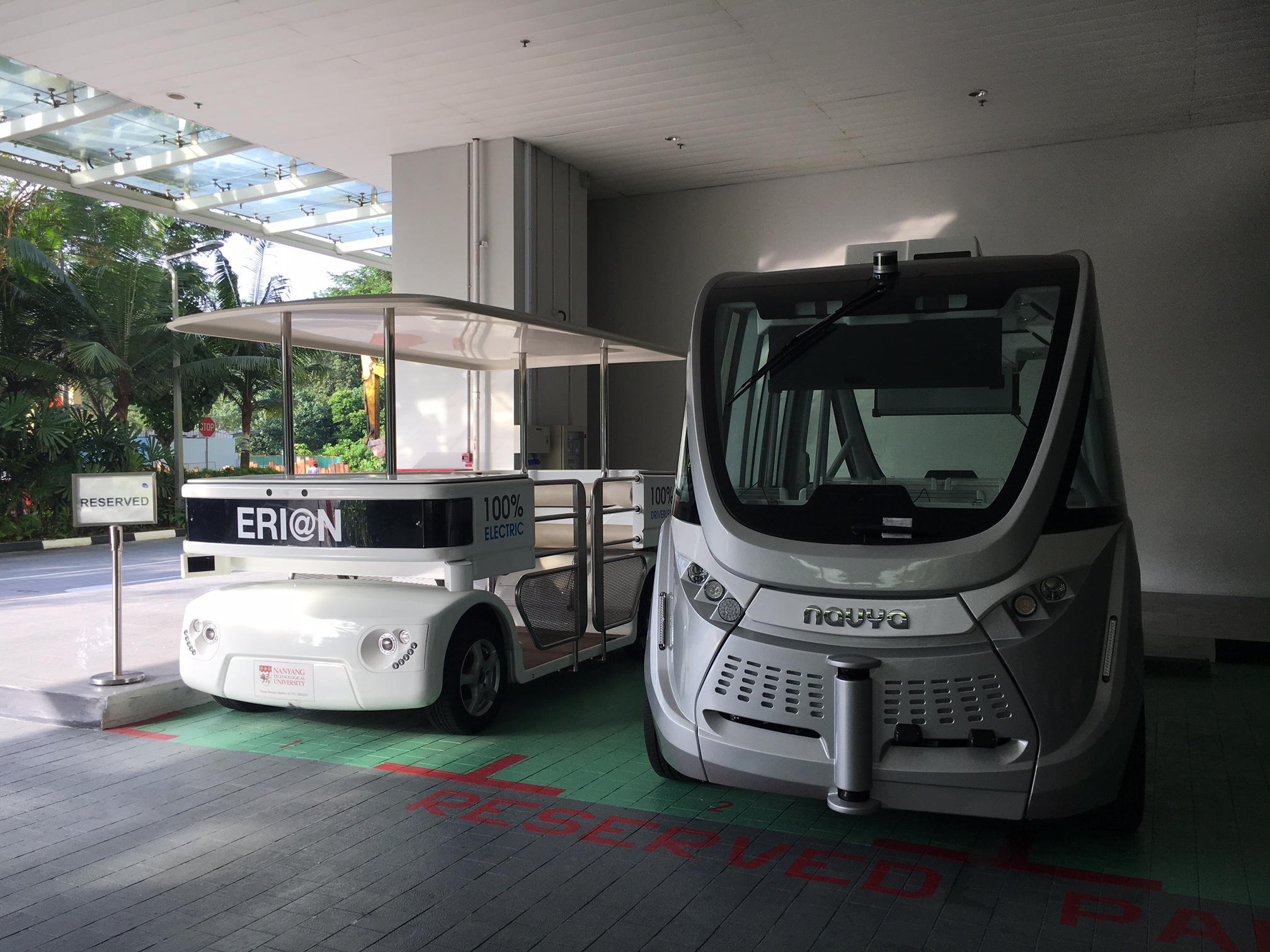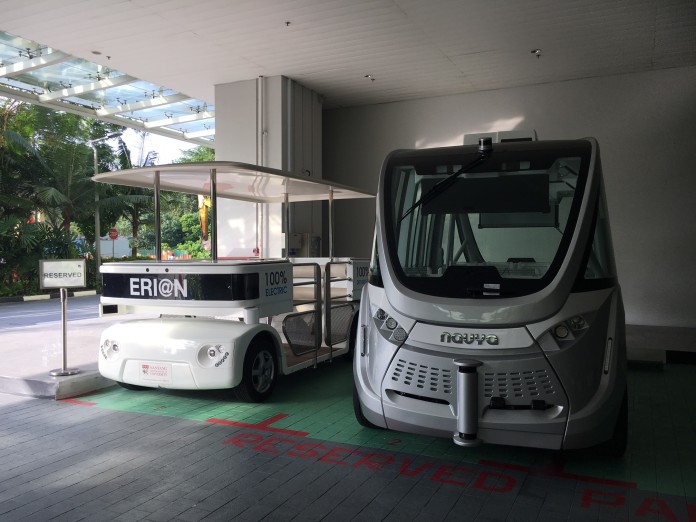SINGAPORE: A new driverless mini bus is the latest autonomous vehicle that’s being put to the test by the Nanyang Technological University (NTU). It is bigger and more sophisticated than the self-driving golf cart and shuttle that NTU has put on trial since 2013.
One key improvement in testing the mini bus is having more sensors on board for navigation, said the university. There are four cameras and eight light radars, two of which are three-dimensional and provide 360-degree detection. It is also equipped with a GPS system and 3G communication.
At a preview on Wednesday (Dec 14), NTU said the mini bus, which is fully enclosed and air-conditioned, can take up to 15 people, with 11 seated and four standing. By comparison, the older shuttle that NTU has been testing since 2013 only has standing room for eight passengers.
The new vehicle can move at speeds of up to 45kmh, although this will be capped at the campus limit of 40kmh for the trial – still double the speed cap of the shuttle.
On a full charge, the vehicle can run a distance of 130km before running out of power. The NTU team added that it is looking to shorten the charging time of about six to eight hours by developing wireless fast charging technology.

The open-air driverless shuttle (left) beside the autonomous mini bus, both being tested by NTU. (Photo: Olivia Siong)
JOURNEY TO BIGGER PROJECTS
Developed by French firm Navya, the mini bus will be tested on the roads between CleanTech Park and the NTU campus within the next three months.
This project is also part of NTU’s road map to eventually trial a 45-seater autonomous bus in its campus in 2018. It was announced in October that the Land Transport Authority (LTA) and NTU’s Energy Research Institute will test two single-deck driverless buses – each with a capacity of 80 passengers – between NTU and CleanTech.
Such technology, however, is expensive, acknowledged Professor Subodh Mhaisalkar, executive director of NTU’s Energy Research Institute. The mini bus, for example, comes with a price tag of between S$150,000 and S$300,000. Professor Subodh said user acceptance and finding the right business model will be crucial to the success of these driverless vehicles.
“The challenges are can you choose sensors which are lower cost? Can you bring the cost of converting a vehicle to an autonomous vehicle down?” he said. “Then, we are working on different apps where you can use them for mobility on demand. Really the vehicle should be seen as a ‘horizontal elevator’. You should call it when you need it.”
Researchers say the mini bus could eventually be deployed on a larger scale to tourist destinations and industrial parks. “Of course a big potential is also the Jurong Innovation District, both the sea port as well as the airport – indoor operations,” said Professor Subodh. “These vehicles are fully electric, so there’s no emissions. There’s no problem operating them in a fully enclosed, air-conditioned environment.”





